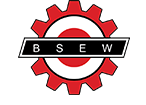Steel Rolling Mill Manufacturers
 info@bsew.co.in
info@bsew.co.in  +91-9837058804, +91-9319358804
+91-9837058804, +91-9319358804
FROM ROUNDS TO ANGLES – SOLUTIONS TO ENSURE HIGH DURABILITY AND MAXIMUM AVAILABILITY
These merchant bars are typically used in light commercial construction, joist manufacturing, industrial/commercial fabrication, and in the manufacturing process of trailers and other heavy equipment.
A modern merchant bar mill has the capacity to produce a variety of products such as angles, squares, flats and small channels. Round bars can naturally be produced, too. Such a mill is characterized by great flexibility and has an annual capacity of 500,000 to 600,000 ton per annum producing a broad product mix including plain rounds and rebars from 16 to 40 mm, flats up to 100 mm, tees up to 80 mm, angles and channels up to 150 mm and I-beams up to 120 mm.
The layout mainly consists of:
- Reheating furnace
- Roughing mill with horizontal-vertical (H-V) stands, cantilever or housing-less design
- Intermediate mill with horizontal-vertical (H-V) housinglessstands
- Finishing mill with horizontal and convertible (H-V)housingless stands with quick-changing device
- Drop wall roller way with lifting aprons
- Cooling bed
- Multi-line straightener
- Finishing facilities with cold shear, stacker and strapping or tying machines
The HL housinglessst and The housingless design stands, in short HL, are the backbone of modern rolling mills. The modular design allows the use of the HL stand cartridges in all possible configurations: horizontal, vertical, convertible and universal. Thus, the HL concept is suitable for roughing, intermediate and finishing mills. Mill stand sizes vary in accordance with the required dimensions of rolls and necks, the pattern of pass, the groove design as well as the transmission and drive characteristics.
The HL stands operate in bar mills, wire rod mills, section mills and combined plants. The main features of the HL design are:
- Conservative component sizing criteria and general philosophy in order to achieve rigidity and compactness of each unit
- Low roll deflection modulus (favourable ratio of roll neck to roll working diameter)
- Long life multi-roller bearings with chocks self-alignment under load
- Balancing of backlash between chocks
- Rest bars designed to allow easy and fine adjustment of guiding devices
Therefore, these are the mayor advantages during operation:
- Finished product matching required tolerance on geometry and size, thus stricter weight control
- Time savings during stand changing with off-line roll replacement
- Flexibility of operation, same stand unit used in horizontal, vertical, convertible and universal configurations, thus minimization of spare parts inventory
- Highly reduced maintenance time and costs, due to a reduced number of components and easy access
- Automated gap adjustment
- Integration in fully automatic control
